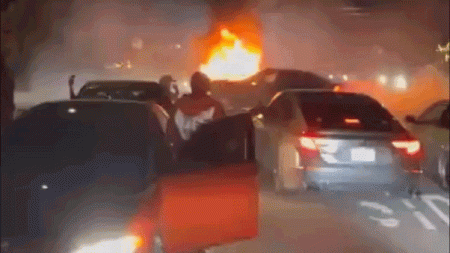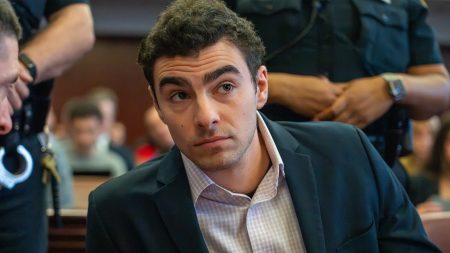Humanitarian Crisis Escalates in El Fasher: Hundreds of Thousands Face Impossible Choices
In the heart of Sudan’s North Darfur region, a humanitarian catastrophe of staggering proportions is unfolding. Approximately 260,000 civilians remain trapped in El Fasher, confronting what aid workers describe as “choices no human should have to make.” These residents face the grim reality of potential starvation or aerial bombardment if they remain in the besieged city, while those attempting to flee risk sexual violence or execution at the hands of armed groups controlling exit routes. As international attention remains fragmented across global crises, this unfolding tragedy has received limited coverage despite representing one of the most severe humanitarian emergencies in recent years. The situation exemplifies the devastating impact of protracted conflict on civilian populations and highlights critical failures in the international community’s responsibility to protect vulnerable civilians in conflict zones.
A City Under Siege: The Deteriorating Situation in El Fasher
El Fasher, once a vibrant regional capital with a population exceeding half a million, has transformed into an urban battlefield where civilians pay the ultimate price. The current crisis emerged following the outbreak of conflict between the Sudanese Armed Forces (SAF) and the paramilitary Rapid Support Forces (RSF) in April 2023, which has since spread throughout the country. However, El Fasher faces particularly dire circumstances as it represents the last major North Darfur city not under RSF control, making it a strategic prize in the ongoing power struggle. “The city has essentially become a prison for its residents,” explains Dr. Amina Hassan, a regional analyst specializing in Sudanese affairs. “Basic necessities including food, clean water, and medical supplies have been systematically blocked from entering El Fasher since fighting intensified in May, creating conditions reminiscent of medieval siege warfare in the 21st century.” Humanitarian organizations report that malnutrition rates have skyrocketed, with children particularly vulnerable as food stocks dwindle and prices for remaining supplies have increased tenfold. Meanwhile, hospitals operate without electricity, medication, or adequate staffing, forcing doctors to perform surgeries by mobile phone light and ration what few supplies remain.
The Impossible Choice: Stay or Flee
For El Fasher’s trapped civilians, each day brings impossible decisions that balance immediate survival against potential death. Those contemplating remaining in the city face increasingly dire food shortages as the siege tightens, with many families already reducing meals to one per day. “We are watching our children grow weaker each day,” said Fatima Mohammed, a 34-year-old mother of four, speaking via satellite phone. “But when we hear what happens to those who try to leave, we feel we have no choice but to stay and hope for intervention.” The threat of aerial bombardment compounds these challenges, with residential areas repeatedly struck in what observers characterize as indiscriminate attacks. Those considering escape face equally horrific prospects. Multiple humanitarian organizations have documented systematic sexual violence against women and girls attempting to flee, while men and boys face summary execution if suspected of military-age status or tribal affiliations deemed hostile by controlling forces. “The checkpoints surrounding El Fasher have become sites of unimaginable horror,” reports Sara Johnson, an emergency coordinator with an international humanitarian organization operating in the region. “We’ve documented cases where entire families were separated, with women subjected to sexual violence while male family members were executed within earshot. These aren’t isolated incidents but appear to be systematic tactics designed to terrorize the population.”
Historical Context: Echoes of Past Atrocities in Darfur
The current situation in El Fasher carries haunting parallels to the Darfur genocide that began in 2003, during which an estimated 300,000 people were killed and millions displaced. Many of the same communities targeted during that conflict find themselves victims once again, raising questions about whether international lessons were ever truly learned. “What we’re witnessing represents a devastating failure of international memory,” states Professor Ibrahim Ahmed, a historian specializing in Darfur’s conflicts. “The current RSF evolved directly from the Janjaweed militias responsible for some of the worst atrocities of the previous Darfur conflict. Their leadership, tactical approaches, and targeting of specific communities demonstrate clear continuity with past patterns of violence.” This historical context adds layers of psychological trauma for residents who survived previous waves of violence only to find themselves targeted again. Particularly troubling is the ethnic dimension of the current violence, with reports indicating specific targeting of Zaghawa, Masalit, and Fur communities—the same groups that bore the brunt of violence during the previous genocide. International legal experts have begun collecting evidence of potential crimes against humanity and war crimes, though questions remain about whether accountability mechanisms will function effectively given Sudan’s withdrawal from international legal frameworks and the geopolitical complexities surrounding the conflict.
International Response: Inadequate Action Amid Growing Crisis
Despite the scale of suffering in El Fasher, the international response has been characterized by expressions of concern without proportionate action. Humanitarian access remains severely restricted, with multiple aid organizations reporting denial of entry permits and logistical obstacles that prevent effective assistance delivery. “We have supplies positioned just hours away from El Fasher, but cannot secure safe passage to deliver them,” explains Mohammed Ibrahim, logistics coordinator for a major international NGO. “The bureaucratic obstacles combined with security threats create a situation where we know exactly what people need but cannot reach them.” Diplomatic efforts have produced limited results, with regional peace initiatives stalling and United Nations Security Council resolutions failing to include robust enforcement mechanisms. Financial pledges from donor countries have consistently fallen short of identified needs, with the humanitarian response plan for Sudan funded at less than 30% of required levels. This funding shortfall has forced aid organizations to make impossible prioritization decisions, reducing services at precisely the moment when expanded assistance is desperately needed. Some analysts suggest that competing global crises, including conflicts in Ukraine, Gaza, and elsewhere, have diverted both attention and resources from Sudan despite the exceptional severity of the situation. “There appears to be a hierarchy of suffering in global attention,” notes Dr. Lisa Williams, an expert in humanitarian response. “The absence of strategic interests for major powers in Darfur has resulted in a muted response despite casualty figures that would generate immediate action in other contexts.”
Voices from El Fasher: Human Stories Amid Statistical Horror
Behind the statistical magnitude of El Fasher’s crisis lie individual human stories that illuminate the everyday courage and suffering of those trapped in the conflict. Ibrahim Salih, a 42-year-old teacher who continues operating a makeshift school in a displaced persons camp within El Fasher, describes how education provides a sliver of normalcy for traumatized children. “We have no books, no supplies, and classes are frequently interrupted by bombings, but still the children come because school represents their only connection to a normal life,” he explains. Healthcare workers demonstrate similar determination amid impossible circumstances. Dr. Samia Osman, one of the few remaining surgeons in El Fasher, performs up to twelve operations daily with minimal supplies. “We reuse everything possible and have learned to operate with almost nothing,” she recounts. “The hardest part is knowing that many patients we save will eventually die from lack of post-operative care or medicines for chronic conditions.” Community solidarity provides one of the few sources of hope, with neighbors sharing dwindling food supplies and protecting vulnerable community members. “When bombing starts, we have organized systems to shelter orphaned children and elderly residents who cannot reach bunkers quickly,” explains community organizer Halima Ishaq. “We refuse to let the most vulnerable face these horrors alone.” These individual stories of resilience stand in stark contrast to the international community’s collective failure to provide effective protection.
A Call for Immediate Action: What Must Be Done
The situation in El Fasher demands immediate, coordinated international intervention before the death toll reaches genocidal proportions. Humanitarian experts emphasize several urgent priorities: First, secure humanitarian corridors must be established and protected by neutral forces to allow aid delivery and civilian evacuation for those wishing to leave. Second, robust diplomatic pressure including targeted sanctions against leadership figures blocking humanitarian access must be implemented with genuine enforcement mechanisms. Third, substantially increased funding is required for both immediate life-saving assistance and support to neighboring regions receiving those who manage to flee. Finally, accountability mechanisms must be strengthened to document ongoing violations and ensure future justice processes have necessary evidence. “El Fasher represents a defining test of international humanitarian principles,” concludes former UN humanitarian coordinator Dr. Jonathan Richards. “If we cannot protect 260,000 civilians facing such clearly documented threats, then the entire framework of international humanitarian law becomes meaningless.” As El Fasher’s residents continue facing their impossible choice between starvation, bombardment, sexual violence or execution, the international community faces its own moral choice: whether to act decisively or allow another preventable catastrophe to unfold while the world watches from a distance.










